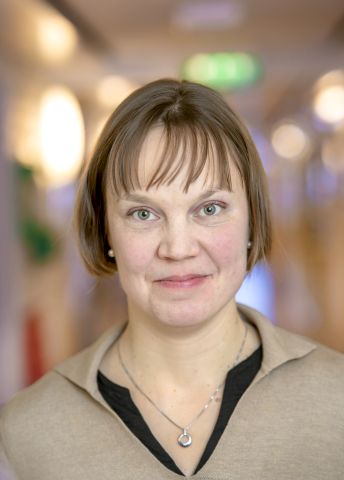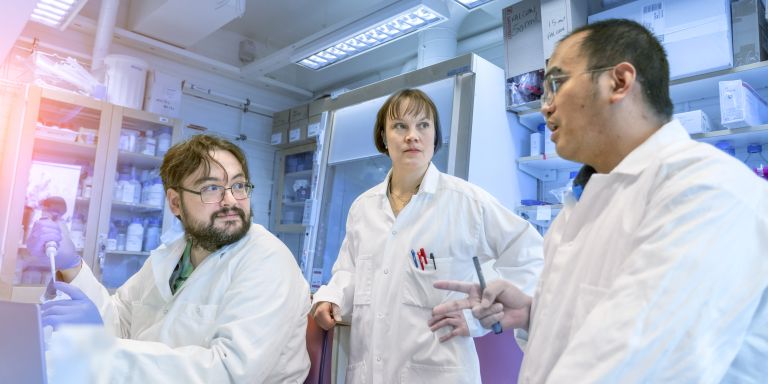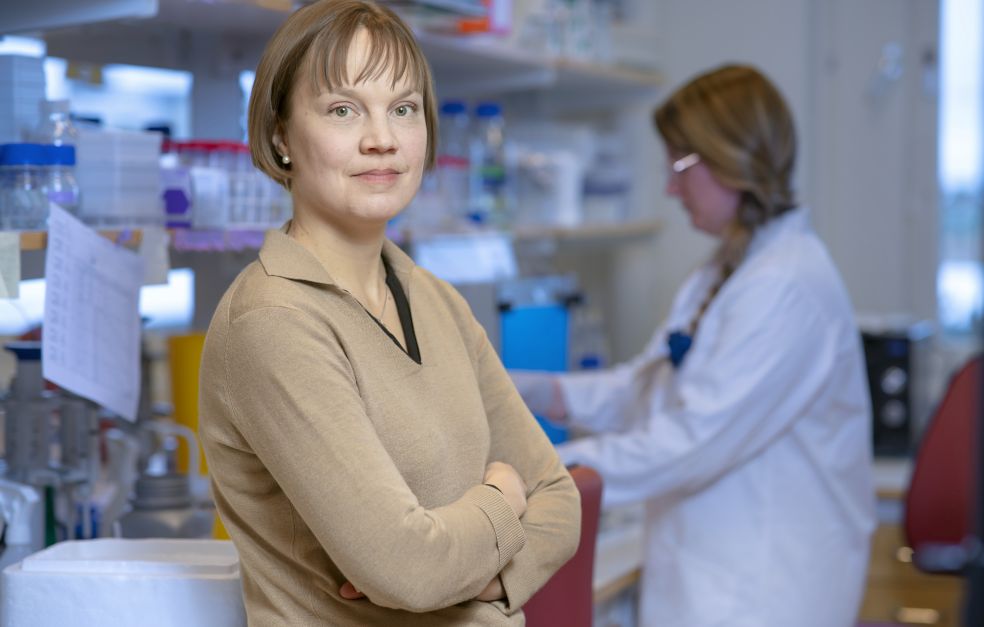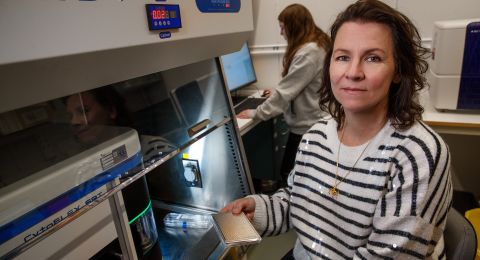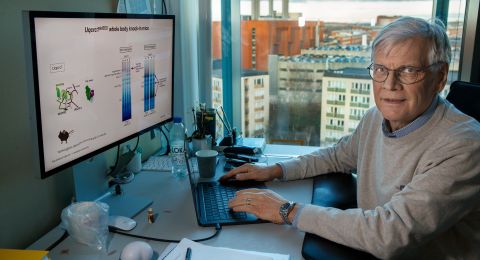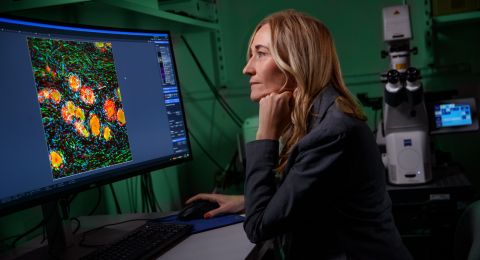Mitochondria – the powerhouses of the cells – create the energy cells need to work. They are also central to other key processes in the cell. Damage to mitochondrial DNA can cause diseases that are currently incurable. Paulina Wanrooij is studying mitochondrial signals to the cell when their DNA is damaged. The goal is better diagnostic methods and therapies.
Paulina Wanrooij
Associate Professor of Medical Biochemistry
Wallenberg Academy Fellow 2021
Institution:
Umeå University
Research field:
Damage to mitochondrial DNA and how it is signaled and impacts the rest of the cell
Our cells contain tiny organelles – mitochondria – whose main task is to produce energy. Diseases may occur if mitochondria do not work properly. One in 5,000 children around the world is born with a mitochondrial disease for which there is no cure.
Most of our DNA is found in the cell nucleus. Elsewhere in the cell there are also mitochondria, which carry their own, smaller, DNA (see fact box), inherited from the mother. Wanrooij, who is researching mitochondrial DNA at Umeå University, elaborates:
“Mitochondrial DNA is something of a research “underdog” – a part of our DNA that is sometimes overlooked. Researchers instead concentrate on the larger DNA present in the cell nucleus. But mitochondrial DNA is involved in numerous important processes in the cell as well as energy production, one of which is inflammation. They are more central than we thought, and we’re now starting to gain a much better understanding of how they work.”
Many mitochondrial diseases are caused by mutations – either in mitochondrial DNA or in genes in the cell nucleus that code for proteins needed to copy or repair mitochondrial DNA.
Wanrooij explains:
“In these cases, where there is a problem in the mitochondrial DNA, the cell does not produce enough energy. An energy shortage then arises. This can in turn cause a multitude of symptoms in various organs, such as muscle weakness and neurological damage, which also makes it difficult to diagnose these diseases. I hope my research will ultimately enable us to develop better diagnostic methods and treatments for these mitochondrial diseases.”
Mitochondrial signals
Some mitochondrial diseases are not caused by energy shortage; they are the result of stress signals from the mitochondria. Wanrooij wants to use the opportunity as a Wallenberg Academy Fellow to study the signals sent by mitochondria in the cell.
“We believe that if we can we turn off certain signals, it will be possible to develop beneficial therapies. This is because some of these signals may be a kind of overreaction by the body. But this is a fairly new research field, and the signaling process is complex. There’s still much we don’t know.”
The research is experimental. Many elements of the project involve studying human cells that have been especially cultured in the laboratory. The researchers can cause damage to the mitochondrial DNA in those cells and then study the signals emitted by the mitochondria.
“It’s taken time to get everything to work, since we want to create damage in mitochondrial DNA, not the DNA of the cell nucleus, and only study the signals from the mitochondria. But the tools are now in place. Molecular understanding of damage to mitochondrial DNA has lagged behind, so we want to contribute knowledge in this field.”
They are also studying yeast cells, whose DNA is easier to manipulate.
“When we detect an interesting signaling process in yeast, we look to see whether the same process is activated when damage occurs in human mitochondrial DNA. We’re also studying purified proteins in a controlled environment to learn how various molecular factors contribute to the damage.”
Mitochondrial dysfunction and instability of mitochondrial DNA may also be associated with various forms of cancer. Wanrooij will also be studying this with the help of the Wallenberg Fellow grant.
A marathon
Wanrooij hails from Finland, where she studied biotechnology at Tampere University.
“I was interested in medical as well as technical subjects, so the biotechnology program was perfect for me. I became interested in mitochondrial DNA early on because even in my first year I was able to work part-time in a research team studying mitochondria. I continued in that role throughout my studies and completed my dissertation there. So I was sold on mitochondria right from the outset.”
Mitochondrial DNA is something of a research “underdog” – part of our DNA that is sometimes overlooked. But it plays a more central role than we thought, which makes it a priority for further study.
She moved to Sweden for the first time in 2006 to study for her PhD. Her time was divided between Karolinska Institutet and the University of Gothenburg. She then worked for a couple of years as a postdoc at Washington University in St. Louis in the U.S., before returning to Sweden. She is now based in Umeå, where she has set up her own research team.
“So far we’ve been attempting to understand how mitochondrial signaling impacts cell growth. And we now believe we’ve found elements of the signaling that stops or slows cell growth when mitochondria don’t work properly.”
It takes time to build up a research environment and achieve results that can be published. Wanrooij laughs when asked whether she is a patient person.
“Not really, but I’m a runner, and I see research as something of a marathon. You have to run at a steady pace and keep calm if you’re going to last the distance. And when I’m out running I often resolve problems in my mind and can see the big picture.”
Text Susanne Rosén
Translation Maxwell Arding
Photo Johan Gunséus
